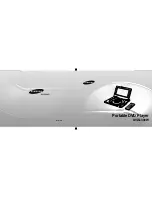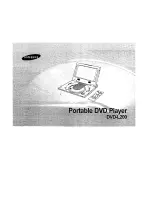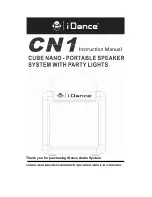
100423 - WIRELESS REMOTE START GENERATOR
STORAGE
20
Contact our helpline at 1-877-338-0999 to locate the nearest
Champion Power Equipment certified service dealer for your
generator or engine maintenance needs.
EVERY 8 HOURS OR DAILY
#
Check oil level
#
Clean around air intake and muffler
FIRST 5 HOURS
#
Change oil
EVERY 50 HOURS OR EVERY SEASON
#
Clean air filter
#
Change oil if operating under heavy load or in hot
environments
EVERY 100 HOURS OR EVERY SEASON
#
Change oil
#
Clean/adjust spark plug
#
Check/adjust valve clearance*
#
Clean spark arrestor
#
Clean fuel tank and filter*
EVERY 250 HOURS
#
Clean combustion chamber*
EVERY 3 YEARS
#
Replace fuel line*
* To be performed by knowledgeable, experienced owners or Champion Power
Equipment certified dealers.
STORAGE
!
DANGER
Gasoline, gasoline vapors and propane (LPG) are highly
flammable and extremely explosive.
Fire or explosion can cause severe burns or death. Only
fill or drain fuel outdoors in a well-ventilated area. Do not
pump gasoline directly into the generator. Use an approved
container to transfer the fuel to the generator. Never use a
fuel container, hose, cylinder or any other fuel related item
that is damaged or appears damaged. Do not overfill the
fuel tank. Always keep fuel away from sparks, open flames,
pilot lights, heat and other sources of ignition. Do not light or
smoke cigarettes.
Short Term Storage (up to 1 year)
Gasoline in the gasoline tank has a maximum shelf life of up to
1 year with the addition of properly formulated fuel stabilizers
and if stored in a cool, dry place. Gasoline in the carburetor,
however, may gum up and clog the carburetor if it isn’t used or
drained within 2-4 weeks.
1. Be sure all appliances are disconnected from the generator.
2. Add a properly formulated fuel stabilizer to the gasoline
tank.
3. Turn the fuel valve to the "ON" position
or, for Dual Fuel
models only,
set the fuel selector switch for operation on
gasoline.
4. Start and run the generator for 10 minutes so the treated
gasoline cycles through the fuel system and carburetor.
5. Turn engine switch to the "OFF" position and allow
generator to cool completely before continuing.
6.
Option 1: Drain Gasoline (all models)
6a. Turn the fuel valve to the "OFF" position
or, for Dual
Fuel models ONLY,
set the fuel selector switch for
operation on propane (LPG) and be sure any propane
(LPG) fuel source is turned off and disconnected from
the generator.
6b. Use the drain bolt on the carburetor to empty any
excess gasoline from the carburetor into an appropriate
container. Use a funnel (and appropriate hose if
necessary) under the carburetor drain bolt to avoid
spillage.
6c. When gasoline stops flowing from the carburetor,
replace and tighten the carburetor drain bolt and
be sure to properly dispose of the drained gasoline
according to local regulations or guidelines.
7.
Option 2: Run Dry (gasoline type models ONLY):
7a. Turn engine switch to the "ON" position and start the
generator.
7b. With the generator running, turn the fuel valve to the
"OFF" position and allow the generator to run until the
engine stops from complete fuel starvation. This may
take a few minutes.
7c. Turn engine switch to the "OFF" position and allow
generator to cool completely before continuing.
8. Remove the spark plug cap and spark plug and pour about
a tablespoon of oil into the cylinder.
9. Pull the recoil slowly to crank the engine to distribute the
oil and lubricate the cylinder.
10. Reattach the spark plug and spark plug cap.
11. If the generator includes a battery, disconnect and charge
according to
Generator Battery
.















































